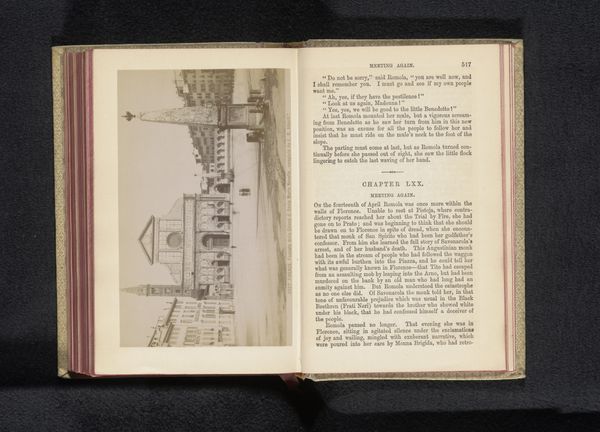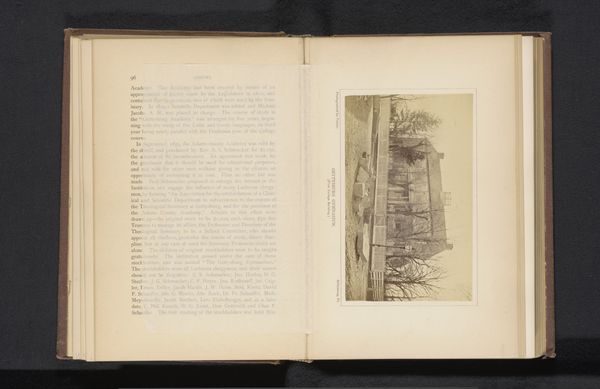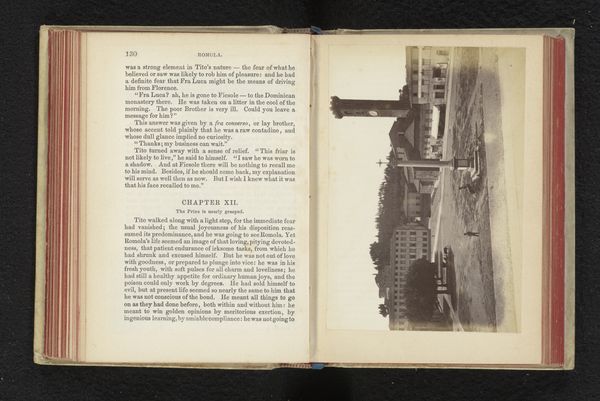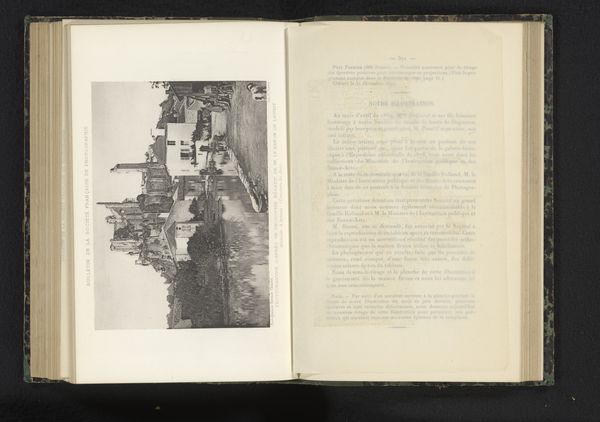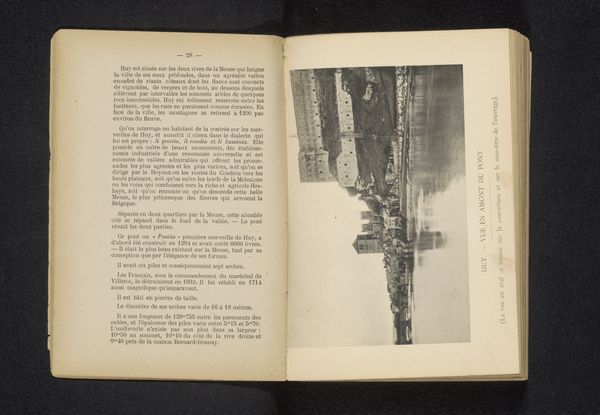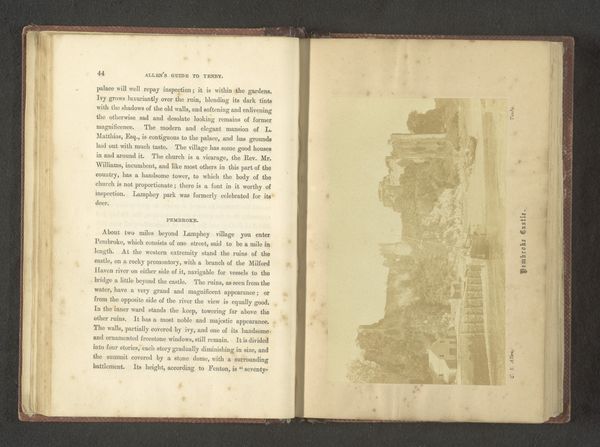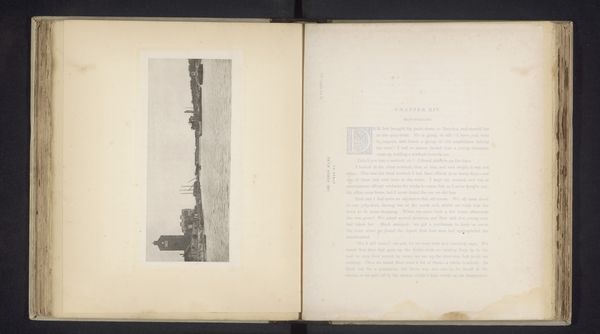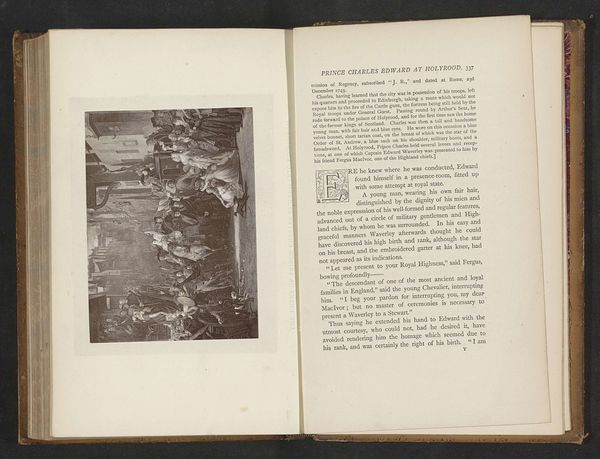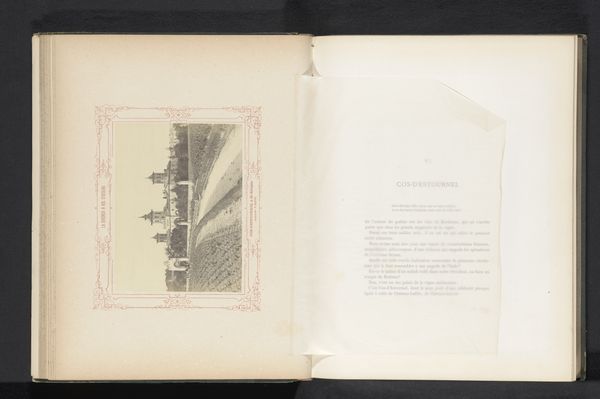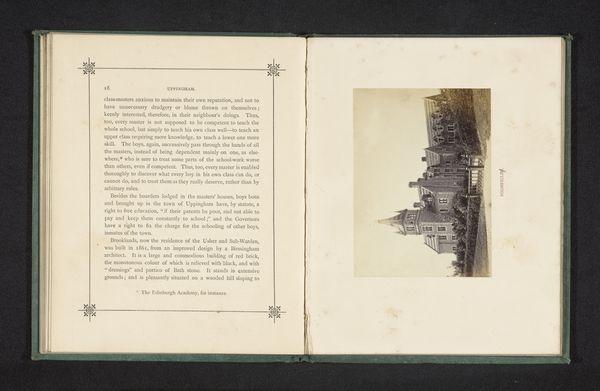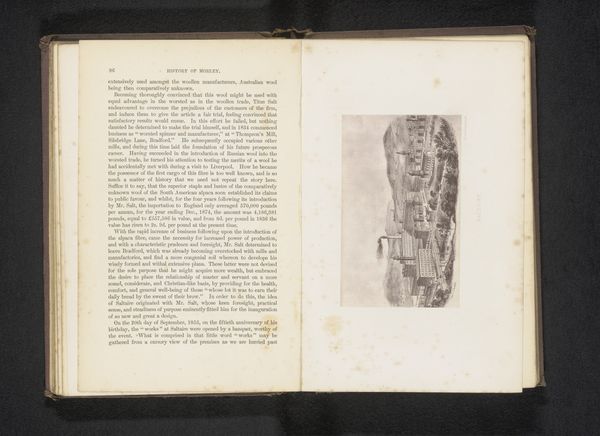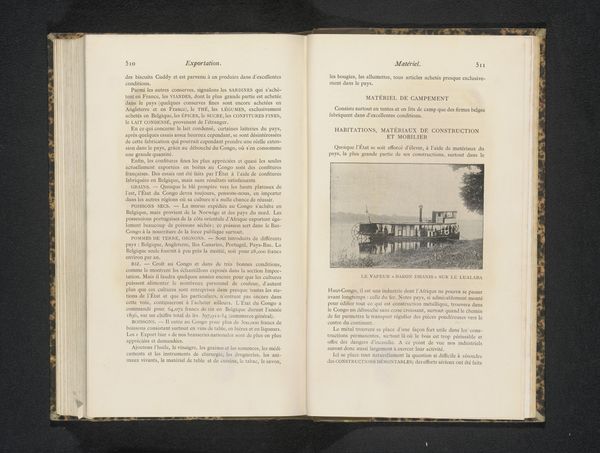
print, photography, gelatin-silver-print, albumen-print
# print
#
landscape
#
photography
#
gelatin-silver-print
#
cityscape
#
albumen-print
Dimensions: height 88 mm, width 118 mm
Copyright: Rijks Museum: Open Domain
Curator: This gelatin-silver print, dating to before 1876, offers us "A View of Crow Nest in Lightcliffe, the Home of Titus Salt," attributed to Appleton & Co. What strikes you immediately? Editor: Well, it’s surprisingly still, isn't it? Stark, almost. There's a kind of somber quality, amplified by the grey tones of the print and this austere row of buildings. They seem incredibly self-contained and ordered. Curator: I see it similarly. Crow Nest was built, expanded, and owned by industrialist and philanthropist Titus Salt, whose name looms large in the Victorian era due to his model village of Saltaire and its association with wealth and social reform. He deliberately situated himself in a prominent space for which he acquired several estates that had panoramic views. In some way, the house becomes emblematic of Salt’s industrial might and elevated societal position. Editor: Exactly, I get the symbolism here. It represents power but also, I wonder about the cost of such 'progress'. The uniform, boxy shape of the houses suggests efficiency and control, echoing Salt's factory layout. Yet, you’re left wondering if there's space for individuality or escape within such structured environments. The symbolism to the community feels, from this vantage point, less about the freedom promised by industrial prosperity and more about imposed order. Curator: That’s a compelling reading. The very act of commissioning this photo, making a permanent visual record of Salt's estate, also serves to monumentalize a specific type of power and wealth. Photography here acts as a tool, not merely to capture, but to solidify a particular narrative. Editor: Precisely! Consider who gets to choose which views get immortalized! Think about what social norms, class hierarchies, and philosophical frameworks went into deciding that we'd memorialize the home, not the conditions inside his factories. What about the communities outside this vista that facilitated his success? We’ve preserved so much of that story through architecture—the buildings he inhabited, but this photographic print provides additional insight by monumentalizing Crow Nest and, effectively, reinforcing Salt’s idealized image as a figure of industry and beneficence. Curator: A vital point about photography acting as social inscription and preservation! Editor: Ultimately, looking at this reminds you to examine the structures – and who designed them – to fully understand the legacy of any system, whether intentional or not.
Comments
No comments
Be the first to comment and join the conversation on the ultimate creative platform.
